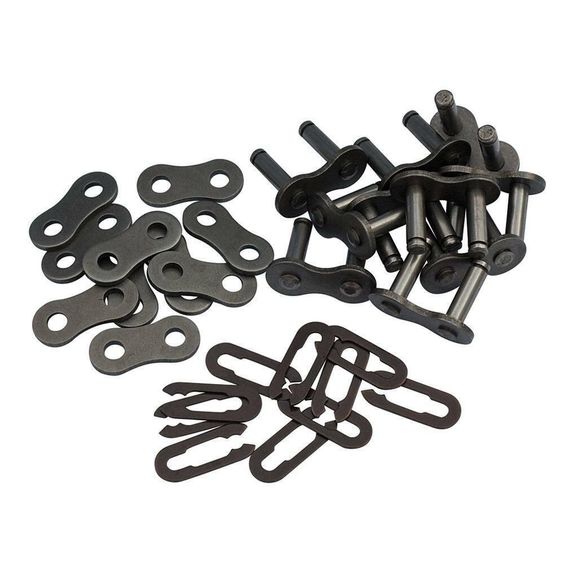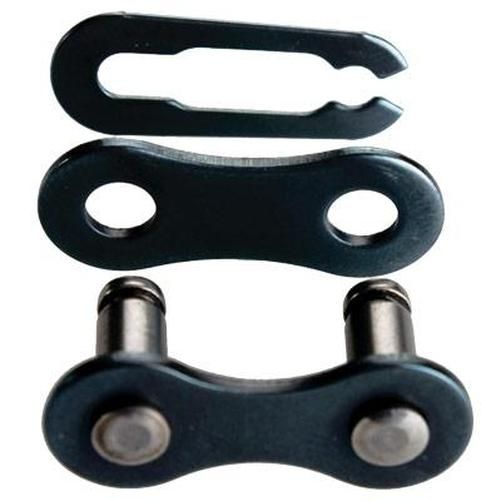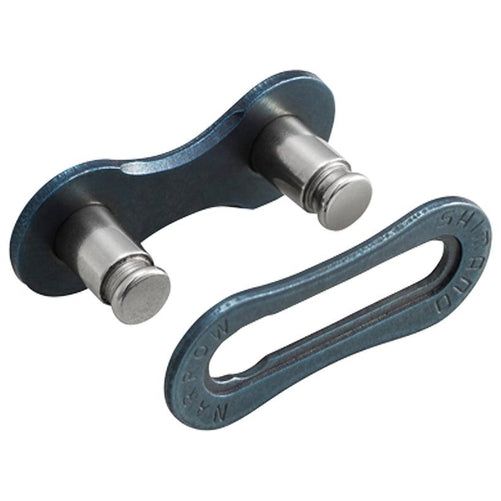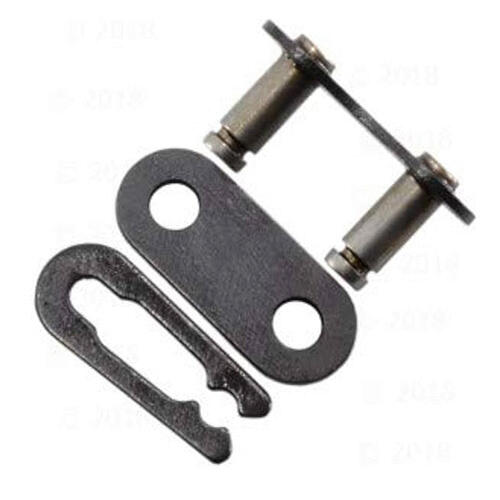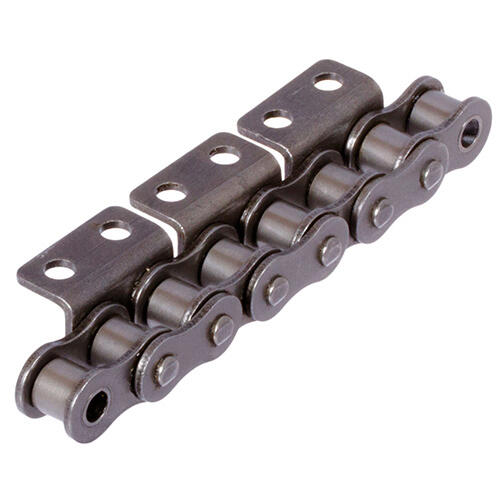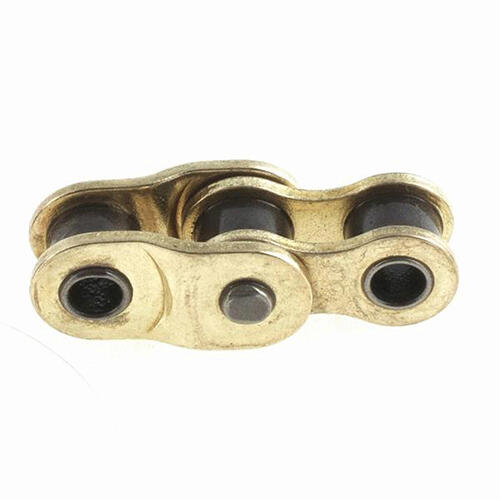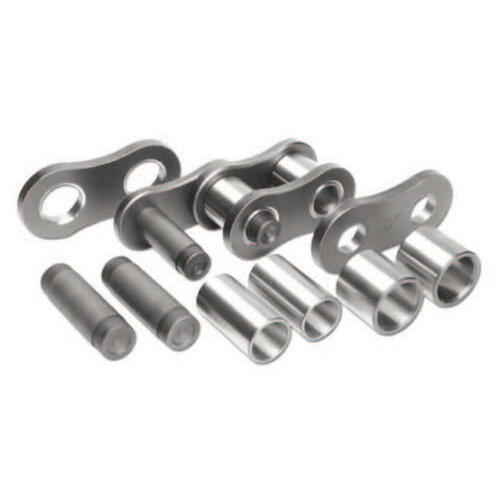Industrial chain parts
The correct selection of chain components according to the material, load, speed, etc., requires expert knowledge and experience
And it has a decisive role in the lifetime of chains and wheels and maintenance costs.
And it has a decisive role in the lifetime of chains and wheels and maintenance costs.
chain lock
Industrial chain lock is an important component in industrial chain systems, which is used for the safety, strength and stability of industrial chains in various applications. The main purpose of using an industrial chain lock is to prevent unauthorized changes in the length of the chain, prevent undesirable torque in the chain, and create a strong and reliable connection between the chain branches.
Industrial chain locks are usually made of durable metals such as steel. They consist of two parts, one part is connected to the branch of the chain and the other part is connected to some part of the machinery or equipment.
When industrial chains are placed in applications with heavy loads or torque variations, adverse events may occur, including unwanted torques and erratic movement. By using a chain lock, these problems are minimized.
spring clip
Industrial spring clips is a small metal piece that is used to connect two chain links to each other. This spring clamp is usually made of steel or stainless steel, which allows it to be easily inserted and tightened between links. There are two main types of spring clamps used in industrial chains:
U-shaped spring clamps: They are the most common type of spring clamp. They are U-shaped and fit into the holes of the connecting links.
Ring spring clips: These spring clips have a ring at one end. The ring is inserted into the connecting ring hole and then the spring clip is compressed to secure it in place.
Both types of spring clamps are effective in securing connector links, which type of spring clamp you use depends on the specific application. For example, ring spring clips are often used in applications where the chain is subject to high vibration or shock loads, so they are more secure and less likely to loosen or break.
U-shaped spring clamps: They are the most common type of spring clamp. They are U-shaped and fit into the holes of the connecting links.
Ring spring clips: These spring clips have a ring at one end. The ring is inserted into the connecting ring hole and then the spring clip is compressed to secure it in place.
Both types of spring clamps are effective in securing connector links, which type of spring clamp you use depends on the specific application. For example, ring spring clips are often used in applications where the chain is subject to high vibration or shock loads, so they are more secure and less likely to loosen or break.
Attachments
Attachments in industrial chains are components that are connected to chain branches and are used to connect loads, tools or different parts to industrial chains. Prongs are attached to chain links by bolts or other suitable fasteners and can cover a wide variety of applications.
Construction and Design: The forks are made of durable materials such as steel or similar alloys to withstand heavy loads and harsh working conditions. The design of the prongs can be in various shapes and dimensions, so that it is suitable for the type of application and desired connection.
Practical use: forks are used to connect loads, tools, complementary and various parts to industrial chains. These loads may be different types of goods or machinery components in different industries.
Types of prongs: Prongs are divided into different types, including tension prongs, toothed prongs, knotted prongs, structural prongs, etc. Each type of these prongs are used for specific needs in different industries.
Construction and Design: The forks are made of durable materials such as steel or similar alloys to withstand heavy loads and harsh working conditions. The design of the prongs can be in various shapes and dimensions, so that it is suitable for the type of application and desired connection.
Practical use: forks are used to connect loads, tools, complementary and various parts to industrial chains. These loads may be different types of goods or machinery components in different industries.
Types of prongs: Prongs are divided into different types, including tension prongs, toothed prongs, knotted prongs, structural prongs, etc. Each type of these prongs are used for specific needs in different industries.
Offset link
offset link is a special type of chain link that is used to add a half link to an industrial chain string. Standard industrial chains only have an even number of links, so if you need an odd number of links, you must use a half lock.
Half locks consist of two side plates, a roller, a bush and a pin with a holding rod. The side panels give the half-lock its unique shape. When a half lock is installed in a chain, it creates a half link that allows you to adjust the length of the chain to an odd number of links.
Half locks are typically used in drives that have short chain lengths and do not use tensioners or adjusters. They are also used in applications where it is necessary to accurately adjust the center distance between gears.
However, it is important to note that half locks are weaker than standard chain links. This is because the form of the side plates reduces the load support. Therefore, it is important not to overuse half locks and avoid using them in applications subject to high loads or high speeds.
Half locks consist of two side plates, a roller, a bush and a pin with a holding rod. The side panels give the half-lock its unique shape. When a half lock is installed in a chain, it creates a half link that allows you to adjust the length of the chain to an odd number of links.
Half locks are typically used in drives that have short chain lengths and do not use tensioners or adjusters. They are also used in applications where it is necessary to accurately adjust the center distance between gears.
However, it is important to note that half locks are weaker than standard chain links. This is because the form of the side plates reduces the load support. Therefore, it is important not to overuse half locks and avoid using them in applications subject to high loads or high speeds.
Roller
Roller in industrial chains is a cylindrical piece that is placed between two chain plates and plays an important role in power transmission. Rollers make the chain slide easily on the gears and prevent wear and corrosion of the chain and gears. Rollers are made of different materials such as steel, brass and plastic. Steel rollers are usually used for heavy duty applications, while brass and plastic rollers are used for lighter applications. Greaseable rollers can be greased and their slipperiness increases the life of wires in industrial chains. Heat-resistant rollers are made of heat-resistant materials and are used in high-temperature environments such as furnaces.
The performance of rollers in industrial chains:
Reducing the friction between the chain and the gear
Increase the life of chains and gears
Increasing the carrying capacity of the chain
Improved chain performance in harsh conditions
The performance of rollers in industrial chains:
Reducing the friction between the chain and the gear
Increase the life of chains and gears
Increasing the carrying capacity of the chain
Improved chain performance in harsh conditions




